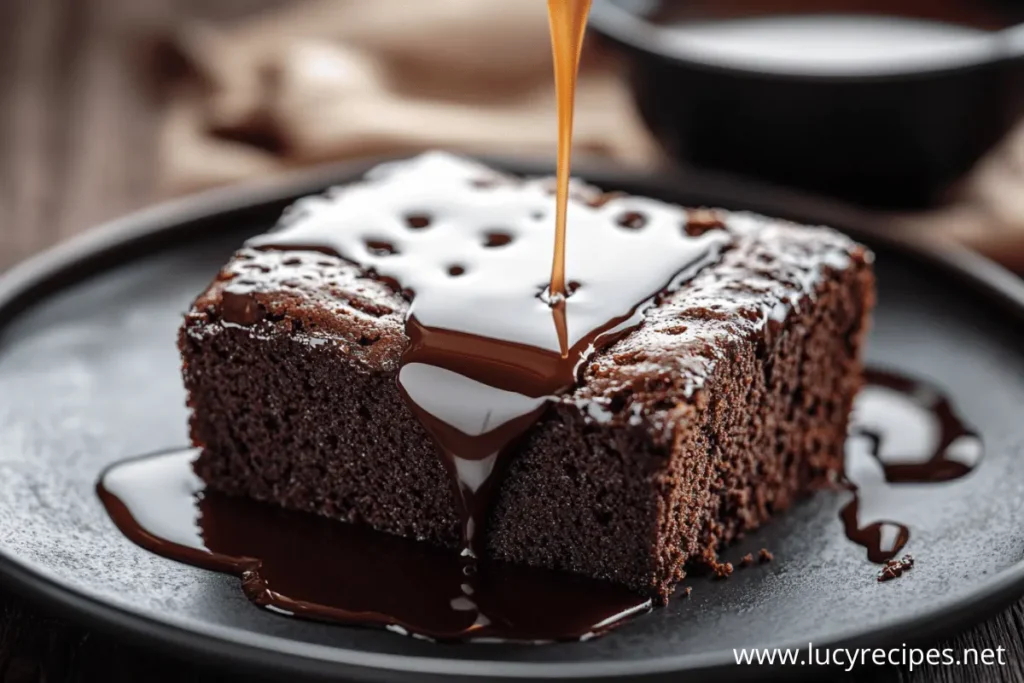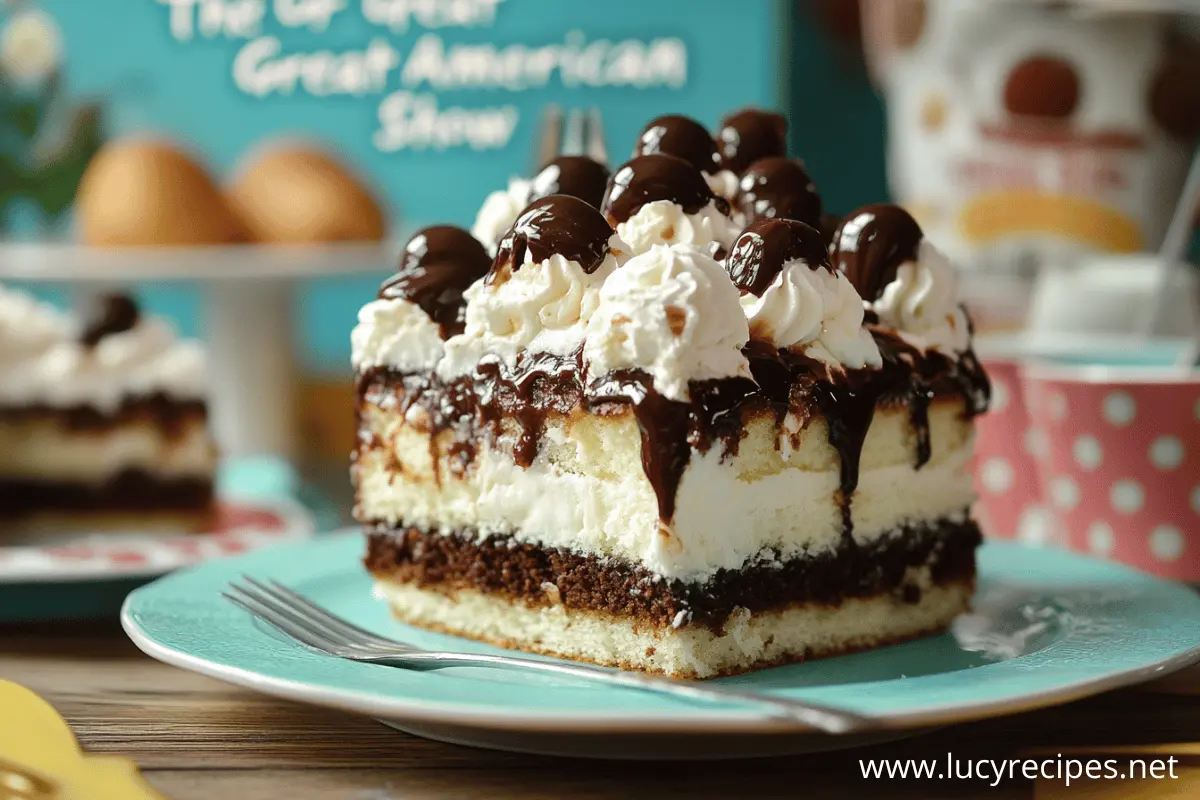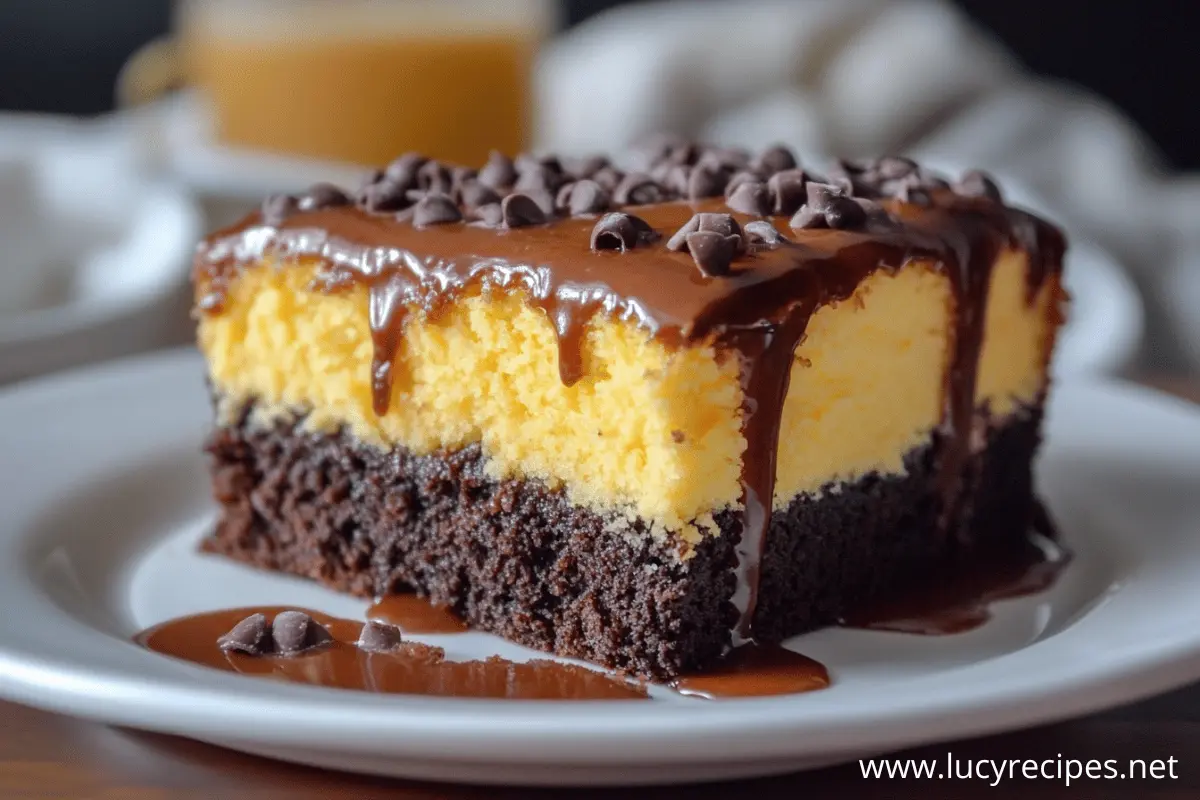Introduction
Poke cakes have a unique place in the dessert world. Their signature appearance, vibrant flavors, and moist texture make them a favorite at parties and gatherings. But have you ever wondered why is it called a poke cake? This question leads us to an intriguing story about creativity in the kitchen and the science behind its success. In this article, we’ll explore the origins, defining features, and science of poke cakes to understand what makes them so special.
Table of Contents
The Origins of Poke Cake
Invention and History
The question Why Is It Called A Poke Cake is rooted in its inventive origins. The poke cake was introduced in the mid-20th century, a time when convenience and innovation were transforming American kitchens. This technique involved poking holes into a baked cake and filling them with liquid or pudding, making it more flavorful and moist. The rise of boxed cake mixes contributed to its popularity by simplifying the baking process, much like recipes for easy desserts such as pumpkin caramel poke cake.
This simple yet ingenious idea combined culinary creativity with practicality. It allowed for endless variations of flavors and textures, making the poke cake a versatile dessert suitable for any occasion. The invention of boxed cake mixes played a significant role in popularizing this dessert, as they provided a quick and easy base for home bakers to experiment with.
Popularity in the 1970s
The poke cake reached its peak in the 1970s, thanks to a clever marketing campaign by Jell-O. Recipes featuring gelatin or pudding poured into cakes captured the attention of home bakers across America. These vibrant, colorful desserts answered the question Why Is It Called A Poke Cake with their iconic method of infusing flavor and moisture into every bite.
Whether it was a strawberry poke cake or a lemon-infused creation, these desserts became synonymous with fun, flavor, and nostalgia, frequently served at birthday parties, potlucks, and holidays.
Evolution Over the Decades
Over time, poke cakes have evolved to incorporate modern trends and ingredients. Recipes now feature everything from fresh fruit and cream to chocolate ganache and caramel. Bakers have also introduced gluten-free and vegan versions to cater to dietary preferences.
Despite these updates, the essence of Why Is It Called A Poke Cake remains the same: a cake infused with liquid for enhanced moisture and flavor. This timeless appeal ensures poke cakes remain a beloved dessert, found in bakeries, food blogs, and even upscale events.
The Defining Features of a Poke Cake
What Makes It Unique?
The answer to Why Is It Called A Poke Cake lies in its unique preparation method. After baking, holes are poked into the cake—hence the name—to allow liquid to seep into the sponge. This process results in a dessert that’s moist, flavorful, and distinct from traditional cakes.
What’s truly remarkable is how the liquid integrates with the cake, creating pockets of flavor that perfectly complement the base. The result is a visually appealing dessert bursting with taste in every bite.
Key Ingredients Used
Poke cakes are made with a variety of ingredients, depending on the recipe and desired flavor. Commonly used components include:
- Boxed cake mix or homemade cake batter.
- Liquid fillings such as gelatin, pudding, condensed milk, or fruit puree.
- Toppings like whipped cream, frosting, or fresh fruit.
These ingredients make it easy to customize the cake for different occasions. Whether you prefer a classic chocolate poke cake or a tropical pineapple version, the possibilities are endless.
How the “Poke” Defines the Cake
The “poke” is the defining characteristic of this dessert. By poking holes into the cake, pathways are created for liquid to permeate the sponge, enhancing both flavor and moisture.
This straightforward yet transformative technique turns an ordinary cake into something extraordinary, infused with syrupy sweetness or creamy richness. Understanding this method is key to appreciating Why Is It Called A Poke Cake and its lasting appeal.
The Science Behind the Poke Method

Role of Liquid in Cake Texture
Liquids play a crucial role in the texture of a poke cake. When liquid is poured into the holes, it binds with the crumb structure of the cake. This interaction creates a dessert that is both soft and moist.
The type of liquid used affects the final result. For instance:
- Gelatin sets within the cake, adding a firm yet luscious texture.
- Pudding creates a creamy consistency.
- Syrups or condensed milk add richness and sweetness.
This understanding of how liquids interact with baked goods explains why is it called a poke cake and why the technique is so effective.
How the Poking Process Enhances Flavor
The act of poking holes into the cake serves a practical purpose that goes beyond aesthetics. In particular, by creating channels, the liquid filling can penetrate deep into the cake, thereby ensuring every bite is infused with flavor. Otherwise, without this step, the liquid would merely sit on the surface, resulting in uneven taste distribution.
This technique also allows for layering of flavors. For example, a vanilla cake can be infused with strawberry gelatin and topped with cream, resulting in a dessert that’s both complex and harmonious. The poke method exemplifies how a simple process can elevate a dessert to new heights.
Why Is It Called a Poke Cake?
The name “poke cake” succinctly describes the defining action that transforms the dessert. Specifically, it’s this act of poking holes and filling them with liquid that truly sets the cake apart from its counterparts. Moreover, this straightforward name reflects the simplicity and ingenuity of the concept, thereby making it both memorable and easy to understand.
Step-by-Step Process of Making a Poke Cake
Preparing the Base Cake
The first step in creating a poke cake is preparing the base cake. This can be a homemade recipe or a boxed cake mix, depending on your preference. To ensure the cake has the right texture, follow the instructions carefully, especially when measuring ingredients. Bake the cake in a suitable pan, typically a 9×13-inch size, as this shape works best for the “poking” process. Once baked, let the cake cool completely. Why is it called a poke cake? Because the next steps involve creating those signature holes!
Poking and Filling Techniques
The hallmark of a poke cake is the holes that are poked into the baked cake. To achieve this, use the handle of a wooden spoon or a similar tool in order to create evenly spaced holes across the cake’s surface. Consequently, these holes allow the filling to seep into the cake, thereby creating pockets of flavor and moisture.
For the filling, options abound. You can use gelatin, pudding, sweetened condensed milk, or fruit purees. Pour the filling carefully over the cake, ensuring it enters the holes. Use a spatula to spread the liquid evenly if necessary. This technique highlights why poke cakes are so moist and flavorful.
Popular Variations and Flavors
Poke cakes are endlessly versatile, offering opportunities to experiment with different flavors and toppings. Popular variations include:
- Chocolate cake with caramel filling and whipped cream topping.
- Vanilla cake infused with strawberry gelatin and fresh fruit.
- Lemon cake with a tangy lemon curd filling.
Each variation showcases the adaptability of poke cakes and answers why is it called a poke cake by demonstrating how the poking process enhances each recipe.
Cultural Significance of Poke Cake
Why It’s a Party Favorite
The question Why Is It Called A Poke Cake is often answered by its widespread popularity at parties and celebrations. Poke cakes are a staple at these events due to their vibrant appearance and delectable taste. They are easy to prepare and customizable to match any event theme. The colorful fillings and toppings make them a visually appealing centerpiece for dessert tables, while their moist texture and rich flavors ensure they’re loved by guests of all ages.
Influence on Modern Desserts
The poke cake has inspired numerous modern desserts, shaping techniques and flavor combinations. Cheesecakes, trifles, and layered desserts often borrow the idea of infusing flavors into the base. The concept of “poking” has even influenced fusion desserts, blending traditional recipes with innovative techniques. This cultural and culinary impact highlights the lasting relevance of poke cakes and further explains Why Is It Called A Poke Cake and cherished in dessert traditions.
Poke Cake in Pop Culture

Television Shows and Cookbooks Featuring It
Poke cakes have made appearances in numerous television cooking shows and cookbooks, showcasing their appeal to both novice and experienced bakers. Shows like “The Great American Baking Show” have highlighted poke cakes as a fun and creative dessert. Cookbooks dedicated to quick and easy recipes often include poke cake variations, making them accessible to a wide audience.
Social Media Trends and Viral Recipes
Social media platforms like Instagram and TikTok have played a significant role in the resurgence of poke cakes. Viral recipes featuring unique flavors and techniques, such as rainbow poke cakes or boozy variations, have captured the imagination of home bakers. Hashtags like #pokecake and #easyrecipes keep the trend alive, reminding us why is it called a poke cake and why it continues to gain popularity.
FAQs
What is the History of Poke Cake?
The poke cake was first introduced in the mid-20th century, gaining popularity in the 1970s due to clever marketing campaigns by brands like Jell-O. Its simple yet innovative concept made it an instant hit, solidifying its place in dessert history.
What Types of Fillings Work Best?
The best fillings for poke cakes are those that can easily seep into the cake and add flavor. Popular choices include:
- Gelatin for a fruity and colorful touch.
- Pudding for a creamy and rich texture.
- Sweetened condensed milk for added sweetness.
These fillings illustrate why poke cakes are so versatile and beloved.
Can You Make a Healthier Version of Poke Cake?
Yes, healthier versions of poke cakes are possible. To begin with, use whole-grain flours, and additionally, reduce the sugar content. Moreover, opt for natural fillings like fruit purees or low-fat pudding. By making these adjustments, you can enjoy the dessert while still staying true to your dietary goals.
Is Poke Cake Gluten-Free?
Poke cakes can be made gluten-free by using a gluten-free cake mix or substituting gluten-free flours in a homemade recipe. Ensure that all fillings and toppings are also gluten-free to cater to dietary restrictions.
How Do You Store Poke Cake?
Store poke cakes in the refrigerator in order to maintain their freshness and moisture. Furthermore, cover the cake with plastic wrap or place it in an airtight container so that it does not dry out. As a result, poke cakes can be kept for up to three days, thereby making them a convenient make-ahead dessert.
Why Do People Love Poke Cake So Much?
People love poke cakes because they are easy to make, endlessly customizable, and incredibly delicious. The moist texture and flavorful fillings create a dessert that feels indulgent yet approachable. This combination of factors answers why is it called a poke cake and why it continues to be a favorite.
Conclusion: The Enduring Charm of Poke Cake
Poke cakes have stood the test of time, evolving from a 20th-century innovation to a modern-day classic. Their unique preparation method, adaptability, and irresistible taste explain Why Is It Called A Poke Cake and ensure their enduring appeal.
Whether you’re making one for a special occasion or experimenting with new flavors, poke cakes offer endless possibilities. Now that you understand Why Is It Called A Poke Cake and the techniques behind it, you can enjoy creating and sharing this delightful dessert with others, adding your personal touch to this timeless treat.

